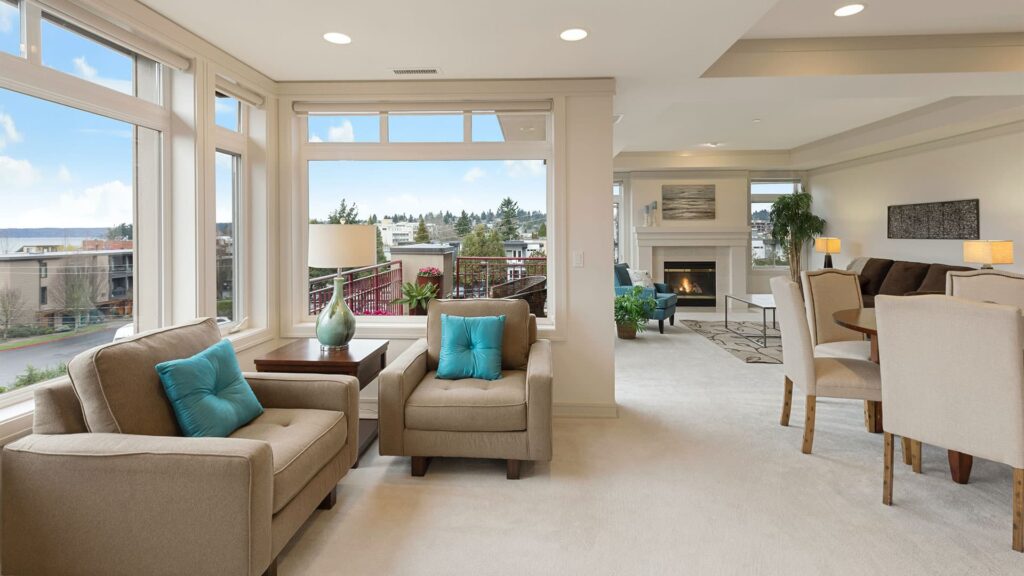As the last August tourists drag their suitcases toward Santa Maria Novella, a new wave of young people invades the city: backpacks on their shoulders, determined gaze and smartphone in hand, they frantically shake out ads for rooms and apartments. It is the ritual that repeats itself every year, but in 2025 it takes on increasingly dramatic contours.
The Florentine rental market is experiencing its most intense metamorphosis in these very weeks of transition. On the one hand, landlords who for months have been riding the wave of summer tourism with sky-high returns on short-rental platforms.
On the other, thousands of students and workers desperately looking for a roof to live under, not for a week, but for the coming months or years. In between, a city trying to find its balance while the numbers speak for themselves: at 1,107 euros per month for a studio apartment, Florence is confirmed as the second most expensive city in Italy for rentals, surpassed only by Venice.
When demand explodes and supply hides
The housing race begins as early as August, but it is with the arrival of September that the market shows its most ruthless face. This year, college students face an even more complex reality than usual. Single rooms in the university area range between 400 and 600 euros per month, when one is lucky to find them. But the problem is not just price: it is the availability of housing itself that is in crisis.
The municipality’s figures speak of 16,395 registered short-stay tourist rental accommodations by the end of 2024, which translates into more than 71,000 beds subtracted from the traditional residential market. To understand the impact of these numbers, just consider that in the UNESCO historic center the ratio is nearly three tourist beds for every resident. A disproportion that makes Florence the Italian city with the greatest imbalance between tourist supply and resident population in the urban core.
Ads for students multiply on Facebook groups and specialized portals, but competition is fierce. “Single room available from October” becomes the equivalent of a lottery ticket, with dozens of messages arriving within hours of posting. The university areas of Novoli and Careggi are particularly under pressure, with proximity to academic hubs driving prices up even further.
The evolution of prices: a market that knows no respite
The Florentine real estate market has seen steady increases in recent years, but it is in the rental sector where the most significant surges are seen. In July 2025, the average price for residential rental properties touched 21.50 euros per square meter per month, marking a 6.12 percent increase over the previous year.
But these are just average numbers that hide even more extreme realities. In the historic center, finding a two-room apartment under 1,500 euros monthly has become almost impossible. The areas of Campo di Marte and Rifredi, traditionally more affordable, have seen double-digit increases over the past twelve months, driven by demand from those who have been kicked out of the center.
TheSeptember effect is particularly noticeable in some areas. Isolotto, for example, has seen a 15.28 percent increase in rental prices over last year, with the average now close to 16 euros per square meter. Novoli, aided by its proximity to the university campus, is seeing demand consistently outstripping supply, with waiting lists to visit even the most modest apartments.
The dynamic is clear: while during the summer landlords can afford to be selective, targeting tourists willing to pay high sums for short stays, in September the pressure of student and work demand creates a short circuit. Many landlords, accustomed to summer rents, are reluctant to return to traditional rentals, creating an artificial scarcity that pushes prices up further.
The regulatory revolution that is reshaping the marketplace
The year 2025 marked a turning point for Florence’s short-term rental market. New municipal regulations, approved after months of debate, introduce substantial changes that promise to profoundly alter the city’s real estate landscape.
The most impactful measure concerns the UNESCO historic center, where a total freeze on new short tourist rental permits has been confirmed. Those already operating in 2024 have a three-year exemption to bring themselves into compliance, but no new apartments will be able to be converted to tourist use. It is a decision aimed at preserving the residential fabric of the heart of Florence, but one that is already generating side effects on the market.
Equally significant is the
The new permit system provides for a municipal registry valid for five years, tied to both the owner and the property. In case of sale, the permit automatically lapses, preventing speculation on already licensed properties. Penalties for noncompliance range from 1,000 to 10,000 euros, with the possibility of permanent revocation of the permit.
But there’s more: as of January 1, 2025, the National Identification Code (NIC) requirement for all short-term rentals went into effect, with mandatory display of the code and safety devices such as monoxide detectors and fire extinguishers. Those who fail to comply risk steep fines and business closure.
Strategies for surviving the September market
For home seekers at this time, preparation is key. The first tip is to move early: starting your search as early as July for a contract that starts in September or October can make all the difference. Documents should be ready: pay stubs or guarantees for workers, certification of university enrollment for students, references when possible.
The areas to consider are no longer just the traditional ones. While Novoli and downtown remain coveted but prohibitively expensive, neighborhoods such as Gavinana, San Jacopino, and parts of Scandicci are emerging as viable alternatives. The tramway has redrawn the geography of rentals: being close to a stop can be as valuable as being downtown, but at more affordable prices.
For students, university residences are an option not to be underestimated. Facilities such as The Social Hub offer all-inclusive solutions that, while not cheap (starting at 600 euros per month), provide certainty of costs and services. Facebook groups dedicated to student rentals remain a valuable resource, but beware of scams: never pay deposits without seeing the property and verifying the identity of the landlord.
On the landlord side, September can be an opportunity to reconsider one’s strategy. With new regulations making tourist rentals more complex and risky, many are considering a return to traditional rentals. Transitional 12-month contracts for students offer a good compromise between flexibility and income stability. In addition, the 21 percent dry coupon for freehold rentals remains fiscally advantageous compared to ordinary taxation.
Areas that are changing face
The post-summer 2025 market is redrawing Florence’s residential map. Campo di Marte, traditionally a residential area for families, is seeing an invasion of students attracted by its proximity to faculties and still relatively low prices compared to the center. Via Masaccio and the surrounding areas offer one-bedroom apartments around 900 to 1,100 euros, figures that seem reasonable in the current landscape.
Careggi and Rifredi continue to be hunting grounds for medical and health professions students, but demand has long outstripped supply. Here, a single room can cost as much as a studio apartment in the suburbs of other Italian cities. Isolotto is experiencing an unexpected renaissance: well-connected, with services and prices still human, it is attracting young couples and workers who have given up the dream of the center.
But it is perhaps in the border areas that the game of the future will be played. Scandicci, Sesto Fiorentino, even Campi Bisenzio are becoming real options for those working or studying in Florence. The key is connection: where the tramway comes, housing demand comes.
A look beyond September
The post-summer 2025 Florentine rental market is just the appetizer of what lies ahead in the coming months. The Jubilee of 2025 will bring additional tourist pressure, with landlords tempted to return to short rentals despite restrictions. Universities continue to attract students from all over Italy and abroad, while the city’s productive fabric requires housing for workers and professionals.
The challenge for Florence is to find a sustainable balance. New regulations are a first step, but we also need housing policies that incentivize long-term housing supply. Student housing projects, redevelopment of public properties, tax incentives for those who rent to residents: these are all avenues to be explored.
For those experiencing this transition on their own skin – students with trolley in hand, families looking for stability, landlords who need to rethink their investments – September remains a month of crucial decisions. The market is complex, the rules are evolving, but with the right preparation and professional support it is still possible to find your way through the maze of Florentine rentals.
In this ever-changing scenario, relying on professionals in the field becomes essential. Those who know the territory, regulations and market dynamics can make the difference between months of fruitless searching and the signing of a fair contract. Because while it is true that Florence changes face after the summer, it is equally true that it remains a city where living, studying and working retains a unique charm. You just have to know how to navigate its increasingly choppy but never impossible waters.





